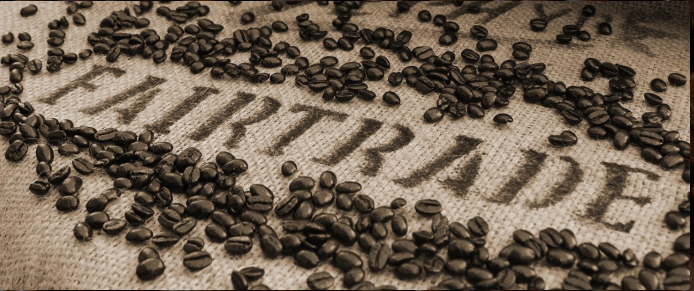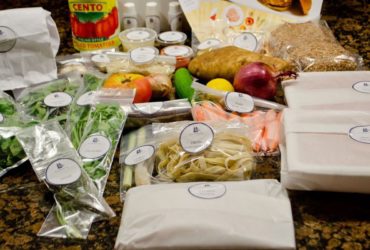BY: MEGAN KESLER
From the banning of plastic straws by multiple cities around the U.S. to the increased emphasis on buying local and supporting small business owners, it’s evident that the interest in how we treat mother Earth and her inhabitants is growing. But how does the fair trade movement address these concerns?
Earlier this year I had the chance to visit a locally owned coffee shop for a “behind the scenes tour” with the owner of everything that goes into their delicious coffee. At the end of the tour, someone in the group asked if the coffee beans they sourced were “fair trade,” to which the owner replied, “No”. His explanation, in brief, was that for coffee fair trade certification doesn’t carry much . He did, however, say that all of their beans came from farms they had visited, and farmers received reasonable wages for their . This got me wondering, what exactly is “fair trade,” and does it improve ethical business practices as much as it claims to, or is it just another trumped up marketing scheme?
Here’s what I found out:
What is fair trade?
Fair trade is a “trading partnership, based on dialogue, transparency and respect that seeks greater equity in international trade. It contributes to sustainable development by offering better trading conditions to, and securing the rights of, marginalized producers and workers – especially in developing countries” (“Fair Trade Glossary”, Fairtrade International). In short, fair trade is a trading system meant to ensure that producers and workers have safe, secure working conditions (i.e. no sweatshops) and that they are paid living wages. These improved wages should not only allow the producers to support themselves and their families, but also to invest in the future of their business and their communities. Ideally, fair trade will lift entire populations out of poverty. Along with social and economic development, these standards promote environmentally sound agricultural practices and prohibit forced labor and child labor.

Source: https://www.fairtradecertified.org/
Fair trade is not regulated by the government, however, a number of private organizations have developed fair trade monitoring systems. One of the largest fair trade monitoring organizations worldwide is Fairtrade International (FLO). Products that meet FLO standards can become Fairtrade certified and use the above “FAIRTRADE®” logo.

Source: http://paschachocolate.com/fair-trade-chocolate/
In the U.S., the leading third-party certifier of fair trade is Fair Trade USA, and their logo is Fair Trade Certified™. Because fair trade is privately regulated, there are a number of other fair trade certification organizations out there besides the two mentioned here. Although each differs slightly in their approach, it’s safe to say they all follow the same general “fair trade” mission we discussed above.
Fairtrade Sales Volumes Reported by Producer Organizations 2014-2015 (MT).

Source: “Monitoring the Scope and Benefits of Fair Trade, Eighth Edition”
Fair Trade International (2016).
Although items such as cotton and flowers can carry a fair trade logo, most fair trade certified products are food products. In particular, there is a focus in the fair trade movement on coffee, chocolate, bananas, sugar, tea, and wine as these products mostly come from developing countries where ethical labor practices are often not prioritized.
Is fair trade really fair?
If you are a conscientious consumer, is the Let’s take a closer look at some of the more common criticisms of the fair trade movement:
- The standards are too high
For certain products like coffee to be Fairtrade certified, farms must form co-operatives with other farms around them, but, not all farmers are able to do this. This issue pertains specifically to Fairtrade, and not necessarily the whole fair trade initiative. Fair Trade USA, for example, is trying to make fair trade more inclusive by adapting the fair trade standards to better suit independent farms. Despite this, 97% of all Fair Trade Certified™ coffee is still produced by cooperatives.
which is ironic considering the whole point of fair trade is to put more money in the pockets of underpaid farmers. A 2009 case study of a coffee co-operative in Costa Rica found that one-third of the Fair Trade premium (the extra money producers receive on top of the minimum price they are paid for their goods) was used to pay for certification (Dragusanu et al. 2014).
- The logos are misleading
What many consumers may not realize is in order to include the “Fair Trade Certified” logo on their product, at least one ingredient needs to be fair trade. Therefore it is not necessary for all ingredients to be fair trade in order to be able to display the certification. Additionally, only raw materials can be fair trade certified, not finished goods. So, you could be buying tea that was grown ethically, but packaged in a factory with unsafe conditions. Along with this example, you can see how a fair trade logo doesn’t guarantee that the company selling the product is trustworthy and always behaves ethically.
- It doesn’t actually reduce poverty
In the fair trade system, producers are paid a “minimum price” for their goods. This minimum price is a guaranteed floor price meant to protect producers from having to sell their products for pennies when the market price is very low. Researchers at U.C. Berkeley and U.C. San Diego examined 13 years of data and found that cooperatives in Guatemala had a net-zero benefit from participating in fair trade (Wydick, 2014). Meanwhile, the consumer is still paying a higher price for the commodity. The minimum price may also cause a market surplus, which in turn lowers free market prices and further impoverishes producers who are not fair trade certified.
Another bone many critics have to pick with fair trade is over how much of the added premium that consumers pay for fair trade items actually makes it back to the producers. Fair trade coffee, for example, can cost nearly double what conventional coffee costs. This means consumers may be paying $3-5 dollars more per pound of coffee. However, according to a study by Bacon (2005), Fair Trade certified coffee growers in Nicaragua received an average of only $0.43 more per pound of coffee than conventional farmers. So, where does the remaining $3.57 go? Mostly to retailers, middlemen, and the certification agencies.
In conclusion, if you are a consumer who cares about the wellbeing of your global neighbors, buying fair trade products is a potential step towards achieving the ethical economy you desire. However, like the coffee shop owner, I now understand why fair trade certification might not help producers and the environment as much as you’d think. If you do want to buy fair trade products, it’s important to keep in mind the caveats we discussed above, and to always do your research about just what it is you are buying, the company you are buying from, and how “fair” a product truly is. No matter what you decide, don’t forget that you do have the power to make a change (it just might not be by paying $1 more for your chocolate bar).
References
Alsever J (2006) Fair Prices for Farmers: Simple Idea, Complex Reality. NYTimes
Bacon C (2005) Confronting the Coffee Crisis: Can Fair Trade, Organic, and Specialty Coffees Reduce Small-Scale Farmer Vulnerability in Northern Nicaragua? World Dev 33:497–511. doi: 10.1016/j.worlddev.2004.10.002
Chambers A (2009) Not so fair trade | Andrew Chambers. the Guardian
Dragusanu R, Giovannucci D, Nunn N (2014) The Economics of Fair Trade. J Econ Perspect 28:217–236. doi: 10.1257/jep.28.3.217
Fairtrade International Monitoring the Scope and Benefits of Fairtrade: Impact Report 2016
What is Fairtrade? | Fairtrade Foundation. https://www.fairtrade.org.uk/What-is-Fairtrade. Accessed 10 Oct 2018
Wydick B (2014) 10 Reasons Fair-Trade Coffee Doesn’t Work. HuffPost
Fair Trade Glossary. | Fairtrade Foundation. https://www.fairtrade.net/fileadmin/user_upload/content/2009/about_fairtrade/2011-06-28_fair-trade-glossary_WFTO-FLO-FLOCERT.pdf. Accessed 10 Oct 2018a
(2012) Fair Trade USA: Why We Parted Ways with Fair Trade International. In: Triple Pundit People Planet Profit. http://www.triplepundit.com/2012/01/fair-trade-all-fair-trade-usa-plans-double-impact-2015/. Accessed 10 Oct 2018
Strength in numbers: Cooperatives making a difference. In: Fair Trade Certif. https://www.fairtradecertified.org/news/honoring-fair-trade-producers. Accessed 10 Oct 2018c






This is mandatory to create a project for any matter, so for that, I have some suggestion. Use 3d printer and create a plan by it with properly, but so many people also used it and they faced some problem so for that if you want to know about it or the solutions also then epson error code 0xf1 just visit with it.